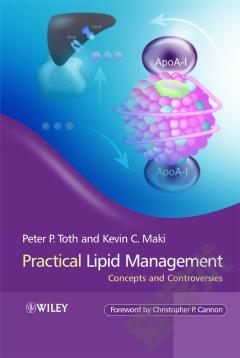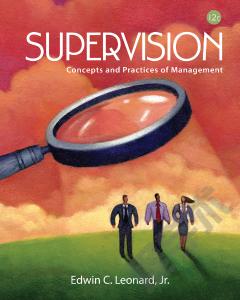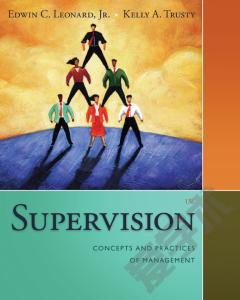Practical Lipid Management —— Concepts and Controversies
----- 蛋白组学:方法与应用概论
Foreword. Preface. Acknowledgements. Chapter 1 Epidemiology of Lipids, Lipid Management and Risk for Coronary Heart Disease: An Overview. 1.1 Early History of Cardiovascular Epidemiology. 1.2 Lipid Risk Factors are Central to Efforts at CHD Prevention. 1.3 LDL-C and CHD Risk. 1.4 LDL-C Lowering and CHD Risk Reduction. 1.5 Other Atherogenic Lipoproteins: Atherogenic Remnants. 1.6 HDL-C and CHD Risk. 1.7 Trends in Lipids and Lipid Management in the USA. 1.8 The National Cholesterol Education Program Evaluation Project Using Novel E-Technology (NEPTUNE) II Survey. Controversy: Should a Measure of Atherogenic Lipoprotein Particle Number be used in Risk Assessment And/Or to Evaluate the Response to Lipid Therapy? Chapter 2 Vascular Biology and Atherogenesis. 2.1 Introduction. 2.2 Arterial Structure. 2.3 Endothelial Cell Function and Dysfunction. 2.4 The Role of Monocytes and Lymphocytes. 2.5 Atheromatous Plaques. Chapter 3 Detection, Evaluation, and Treatment Goals for Lipid Disorders in Adults. 3.1 Matching Aggressiveness of Treatment to Absolute Risk. 3.2 Screening for Dyslipidemias. 3.3 Risk Stratification. 3.4 Steps in the Risk Stratification Process - Major Risk Categories. 3.5 Tips for Calculating the Framingham Risk Score. 3.6 Subcategories for Consideration ofMore Aggressive Optional Treatment Goals. 3.7 Very High Risk Patients, Optional LDL-C Goal <70 mg dl -1 40. 3.8 Moderately High Risk Patients, OPTIONAL LDL-C Goal <100 mg dl -1 40. 3.9 Treatment Goals for Patients with Elevated Triglycerides. 3.10 Triglycerides and HDL-C as Targets for Therapy. Controversy: Should Treatment Guidelines Include Targets for the Total/HDL Cholesterol Ratio? Chapter 4 Therapeutic Lifestyle Changes in the Management of Lipid Disorders and the Metabolic Syndrome. 4.1 Nature and Nurture in the Development of CHD Risk Factors. 4.2 Lifestyle Factors as Determinants of CHD Risk in Populations. 4.3 Within Country Variations in Lifestyle and CHD Risk. 4.4 The Metabolic Syndrome. 4.5 Therapeutic Lifestyle Changes. 4.6 The TLC Diet. 4.7 Dietary Adjuncts: Viscous Fibers and Plant Sterol/Stanol Products. 4.8 Physical Activity and Weight Reduction. 4.9 Smoking Cessation. 4.10 Importance of Allied Health Professionals. Chapter 5 Management of Elevated Low-Density Lipoprotein Cholesterol. 5.1 Relationship between LDL-C and Risk for Cardiovascular Events. 5.2 Clinical Trial Support for Very Aggressive LDL-C Reduction for Those at Highest Risk. 5.3 Genetic Disorders Associated with Elevated LDL-C. 5.4 Atherogenic Impact of LDL-C. 5.5 Management of Elevated LDL-C. Controversy: How Low Should We Go? Controversy: Risks and Benefits of High-Dose Statin Therapy Versus Combination Lipid Drug Therapy. Controversy: Do the Benefits of Low-Density Lipoprotein Cholesterol Reduction Depend Strictly on "How Low You Go" or also on "How You Get There"? Chapter 6 Management of Elevated Triglycerides and Non-High-Density Lipoprotein Cholesterol. 6.1 Clinical Factors Associated with Elevated TG and Non- HDL-C Levels. 6.2 Disorders of TG-Rich Lipoprotein Clearance. 6.3 Insulin Resistance and Hypertriglyceridemia. 6.4 Excessive Production of VLDL: The Primary Lipid Abnormality in the Insulin-Resistant State. 6.5 Reasons for Elevated Free Fatty Acid Levels in Insulin- Resistant States. 6.6 Body Fat Distribution and Insulin Resistance. 6.7 Insulin Resistance in the Nonobese Patient. 6.8 Hypertriglyceridemia and the Development of Atherogenic Dyslipidemia. 6.9 Lifestyle Management for the Metabolic Syndrome and Atherogenic Dyslipidemia. 6.10 Drug Therapies. 6.11 Intensification of Efforts to Lower LDL-C as a Means of Achieving the Non-HDL-C Goal. 6.12 Targeting Triglyceride-Rich Lipoprotein Reduction as a Means of Achieving Non-HDL-C Goal. 6.13 Fibrates. 6.14 Niacin. 6.15 Omega-3 Fatty Acids. 6.16 Management of Diabetic Dyslipidemia. Controversy: Do we Need a Triglyceride Treatment Target to Insure a Predominance of Larger, More Buoyant LDLParticles? Chapter 7 Management of Depressed High-Density Lipoprotein Cholesterol. 7.1 The Relationship between HDL and Risk For CVD. 7.2 Prevalence of Low HDL-C. 7.3 Goals for HDL Treatment. 7.4 Antiatherogenic Effects of HDL. 7.5 HDL and Insulin Resistance. 7.6 Effects of Lifestyle Modification on Serum HDL. 7.7 Pharmacologic Management of Low HDL. Controversy: Do we Need HDL Treatment Goals? Chapter 8 Lipid Management in Population Subsets: Women, the Elderly, Ethnic Minorities, Children, and Adolescents. 8.1 Women. 8.2 Lipids in Women. 8.3 Treatment of Dyslipidemia in Women. 8.4 Sex Hormone Therapy, Lipids, and Cardiovascular Risk in Menopausal Women. 8.5 The Elderly. 8.6 Special Considerations for LipidManagement in the Elderly. 8.7 Ethnic Minorities. 8.8 Risk Factor Incidence and Prevalence in Ethnic Minority Groups. 8.9 Children and Adolescents. Chapter 9 Emerging Risk Factors and Biomarkers of Cardiovascular Disease. 9.1 Role of Inflammation in the Pathogenesis of Atherosclerosis. 9.2 Biomarkers of Cardiovascular Disease. Chapter 10 A Primer on Clinical Trials and Critical Review of Clinical Trial Reports for the Clinician. 10.1 Design Issues Affecting the Validity and Generalizability of Clinical Trial Results. 10.2 Chance, Bias, and Confounding as Potential Explanations for Trial Results. 10.3 Efficacy versus Effectiveness. 10.4 Useful Questions to ask when Evaluating a Published Clinical Trial Report. Chapter 11 Case Studies. Index.
{{comment.content}}








 京公网安备 11010802027623号
京公网安备 11010802027623号